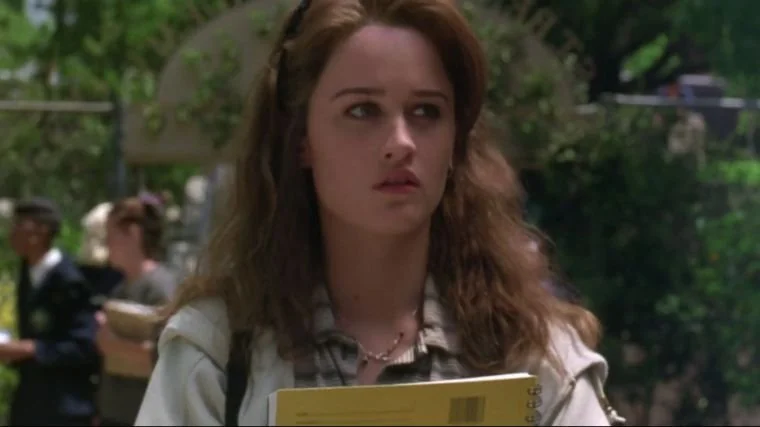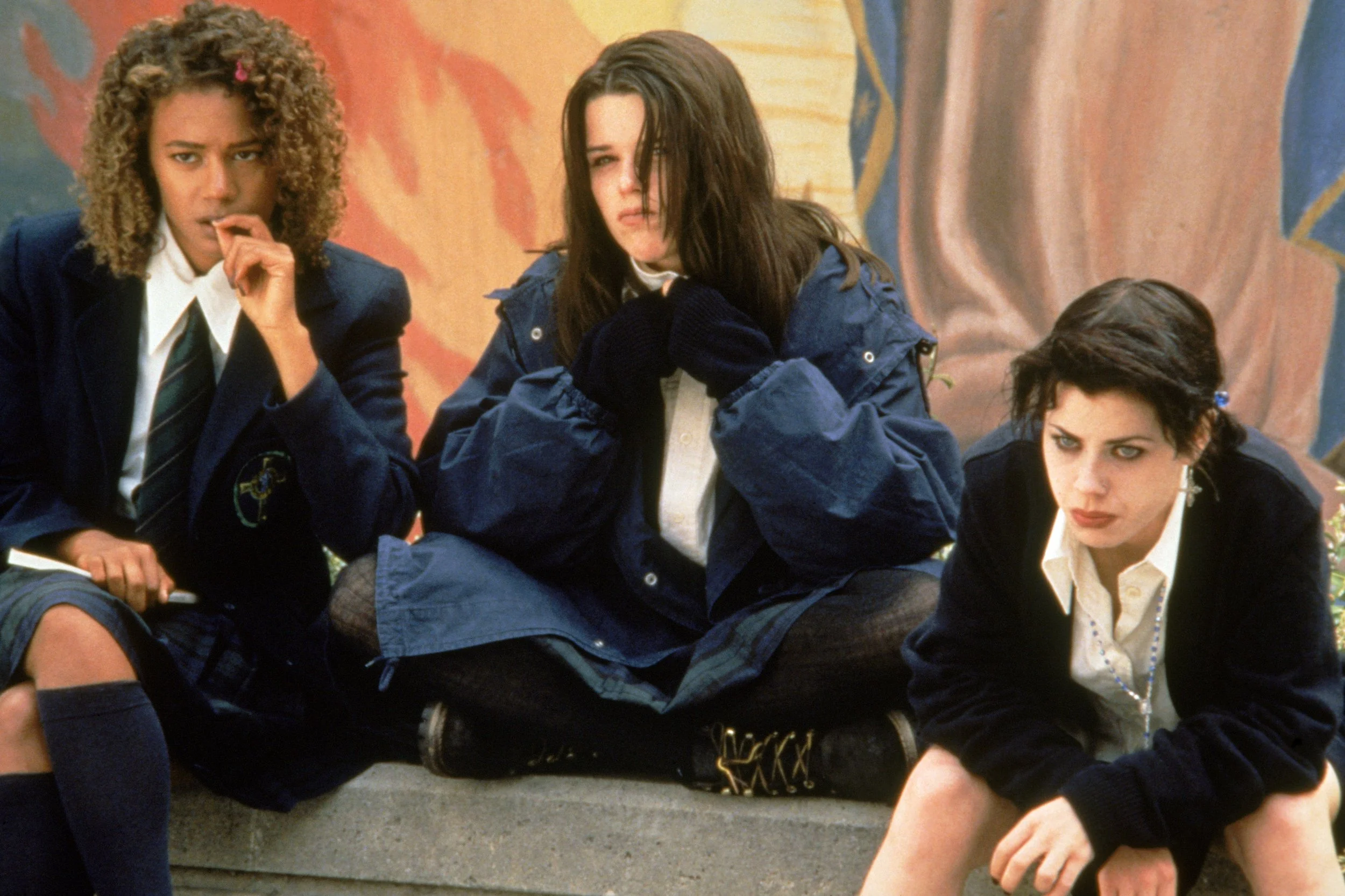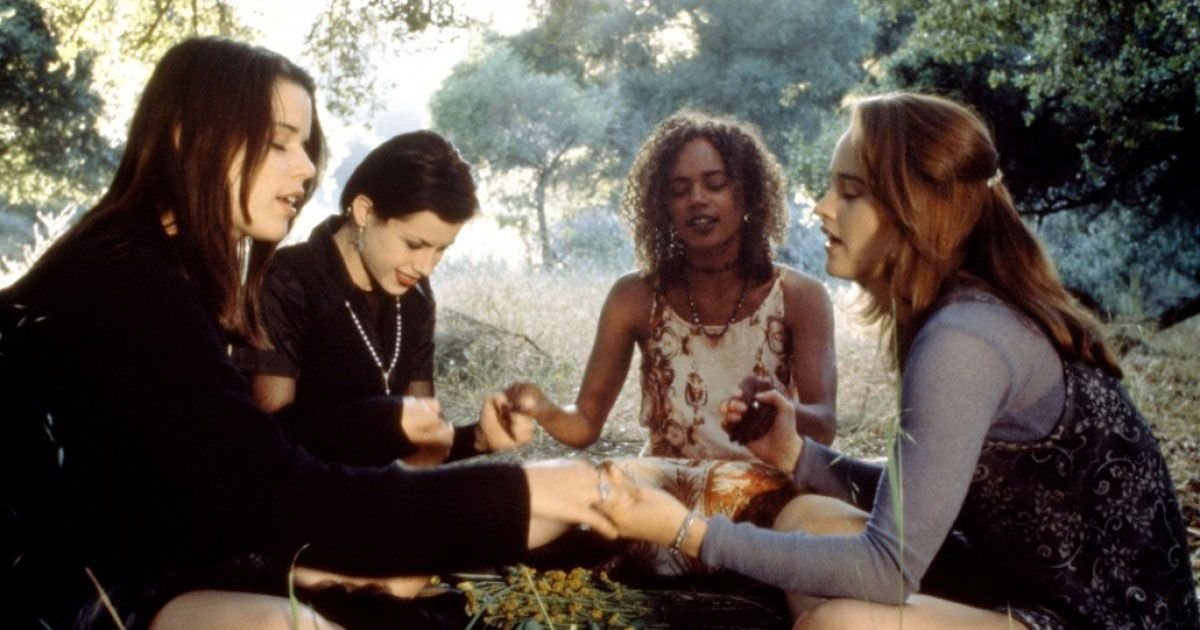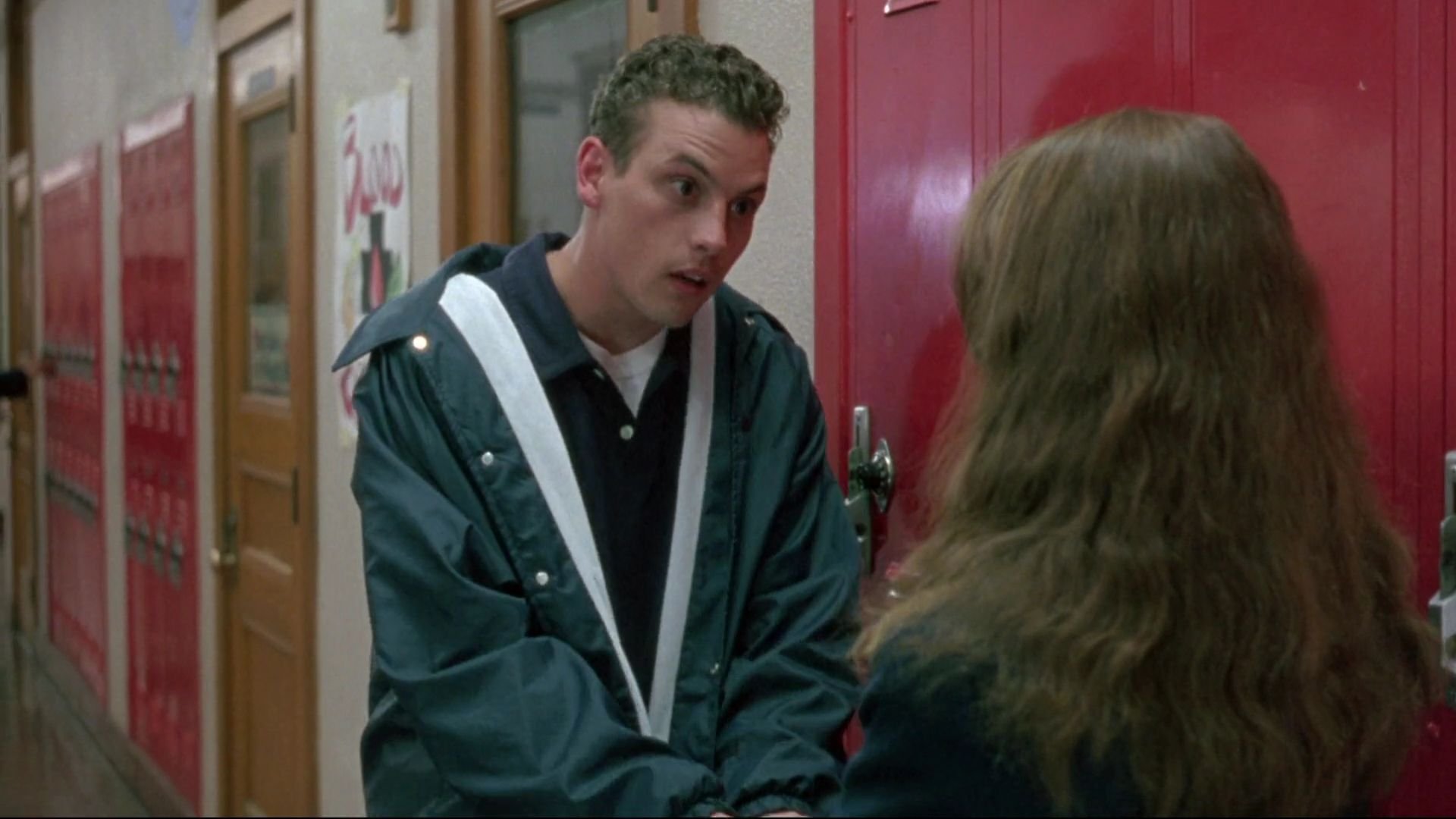[Editorial] The Craft: Witchcraft, Sisterhood and Empowerment Part 1
Bus Driver: “Watch out for those weirdos”
Nancy: “We are the weirdos mister”
Andrew Fleming’s The Craft (1996) is a film that most teenage girls throughout the twenty-first century have watched and treasured. For girls of my generation, The Craft DVD was passed around at sleepovers behind our parents backs; we tried arduously to replicate the outfits, the spells, and the rebellious attitudes that the girls in the film exuded. The film was such a cult classic that it even had a 2020 remake of the same name. However, although The Craft can be imitated, it can never be replicated. Time reporter Peg Aloi stated that young girls were “enthralled by its dark glamour” and many started to look “into witchcraft and paganism”. Indeed, many young women who identify as feminists and modern witches have fallen in love with the film year after year since its release in 1996 and it is not hard to see why. The Craft’s underlying themes of sisterhood, conquering demons, and young women finding ways to empower themselves all encourage the downtrodden to find that bit of magic that resides in all of us.
PART ONE:
Witches, Outcasts and Outsiders
“In this cultural climate, the witch is increasingly viewed as a symbol of female power […] many may now embrace the witch identity for political or spiritual reasons, but thousands of women have suffered and died because of their perceived association with witchcraft – Kristen J Sollée, Witches, Sluts, Feminists” (p.13).
As Sollée rightly states, the symbol of the witch has become synonymous with female empowerment. When teenage girls and other marginalised women see the icon of the witch, they can sometimes feel drawn to her as ‘the witch’ symbolises something they aspire to be: powerful. Those who have been outcast and marginalised by society resonate with the historically and socially persecuted witch.
Figure 1. Sarah Bailey
Throughout the film, I feel a strong sense of identification with Sarah Bailey (Robin Tunney) who has recently moved to a new city and feels like an outcast, having moved away from her friends and her old school. Sarah’s mother is dead, which seems to trouble her greatly, but it is clear she keeps her mother close in her heart, as evidenced bye the picture of her on her bedside table. Not only was Sarah’s world turned upside down by the recent move, but she also cannot find solace in her new house as it is shabby, run down, and has a leaking roof. Sarah’s feelings of marginality do not ease when she starts school. However, she is not the only outcast at the school; a group of boys humiliate and ostracise three girls: Bonnie Harper (Neve Campbell), Rochelle Zimmerman (Rachel True), and Nancy Downs (Fairuza Balk).
Figure 2. From left to right: Rochelle, Bonnie, and Nancy
The boys scoff at the girls and shout “scary girls alert”. Sarah makes a love interest with Chris Hooker (Skeet Ulrich), who dubs Bonnie, Rochelle, and Nancy “Bitches of Eastwick”. Not only does this bring to light the callousness of teenagers in high school, but it also highlights the hierarchy that comes with the institutions – especially in schools, where individuals can make others feel inferior for not satisfying societal norms.
Witchcraft and sisterhood
“The Craft has such a fierce hold on the generation of young girls who discovered it in conversation with peers or at candlelit slumber parties in the late 1990s — the brand of adolescent bravado it displays and its sense of sisterhood.”- VULTURE
As discussed previously, the girls in The Craft are outsiders both socially and aesthetically.
Figure 3. Left to Right: Sarah, Nancy, Rochelle and Bonnie
The figure above of the grungey teenagers has captured a whole generation of young girls. The idealisation of the ‘pretty blonde girl’ in films like Legally Blonde (2001) and Clueless (1995) dominated 1990s and 2000s popular culture. Of course, not everyone who watched these films was white, thin, and blonde, so to see protagonists that look like normal teenagers was remarkable for the time. Rochelle is black, Bonnie has visible disabilities, Sarah is a short brunette girl-next-door, and Nancy is representative of a girl with a gothic look. Their heterogeneous styles and personalities are something that draws many young people to The Craft – a sense of identification, a sense of visibility.
The girls’ shared sense of marginalisation draws them to each other, essentially creating a sense of sisterhood amongst them. When Sarah joins the school, Bonnie proclaims that they have found the “fourth member” to join their coven. The spells that they crave to cast will now work, with a fourth member completing their circle. Although the girls encompass different types of witchcraft (for example, Sarah is a natural witch and the others are not), they all unite in using their power to fight their oppressors.
Witchcraft as a tool to fight oppression
The girls perform wish fulfilment spells in which they ask for their oppressed characteristics to be altered / embraced. Bonnie has severe scarring and must undergo painful treatment and skin grafts to heal her, but this rarely works, so she asks for the power to be beautiful outside as well as inside. Sarah asks to love herself more and to be loved more by others. Rochelle, being the only black member of the coven, often suffers racist abuse from a girl at school called Laura, a girl at school who had previously commented to Rochelle that she does not like “negorids”. Rochelle asks for the power to not hate those who hate her. Nancy comes from an abusive and impoverished home and asks for all the power of Manon. Through this pact to Manon and completing their circle, the girls start to bond as a result of their involvement in witchcraft.
They start to socialise with each other more: going to each other’s houses, watching films like Bewitched (1972), and performing more spells together.
Not only does the use of magic and witchcraft make the girls closer, but their spells also actually start to work. This translates in the high school hierarchy as they start to flourish and become more confident, despite the ridicule, which makes them more favourable to their peers. Witchcraft has often been denounced in film and seen as something wicked (as in The Wizard of Oz’s Wicked Witch of the West, 1939), treacherous (Hocus Pocus, 1993) and even something condemnable to death (The Crucible, 1996). The Craft enacts something quite revolutionary by portraying witchcraft as a useful tool (when used properly) as it brings the girls together as a collective to fight social injustices.
Combatting Sexism
Nancy: ‘He [Chris] was going around the whole school saying that you [Sarah] were the lousiest lay he’s ever had and, coming from him, it’s pretty bad’.
Not only does The Craft engage with the important issues of sisterhood, high school hierarchy, and conquering one’s demons, it also highlights the issues of battling sexism. The boys at the school frequently engage in use of sexist language (‘snail trail’, ‘sluts’) which is highly reflective of the modes of toxic masculinity prevalent in high school culture. Chris introduces himself to Sarah and gives the façade of a ‘nice guy’ but is really a misogynist liar. He instantly tells Sarah that Nancy is a ‘major slut’. Whilst Sarah ignores the red flags and insists on being friends with Chris, when he invites her back to his house and she declines, the next day at school he tells everyone that they slept together. Once Sarah confronts him, he tells her to stop begging it and tells her to go away.
Figure 6. Chris and Sarah's encounter in the hall
This issue is particularly pertinent as many girls, especially going through high school have to face vulgarity from the opposite sex, being called a “prude, “a tease”, a “slag”. But The Craft shows that although women and girls who go through this may feel alone, it is more common than often thought. Not only does the film highlight this issue, but it also makes it very clear that slut shaming is not the fault of the young women and girls, but something that chimes synonymously with toxic masculinity. When the male ego is wounded, it is easy to lie and say, “she slept with me”, when often, this is not the truth. Chris dies towards the end of the film by the hands of Nancy, which some critics have condemned and has left others feeling ambivalent. As Sophie Elizabeth wrote for Bloody Good Horror, in 2020 “I’m not saying that Chris deserved to die, but I think we can all agree that he at no point proved himself to be a “good guy.” Many can agree that although Chris displayed misogynistic attitudes, his death was extreme. However, I believe Chris’s death signified something greater than just an idiotic teenage boy dying: it signified the death of toxic masculinity. The film’s wider message was to show that society spares no room for such patriarchal and outdated ideals.. The Craft is revolutionary in this respect as it highlights the issues of misogyny and sexism prevalent in high schools and condemns misogynists and sexists without romanticising them.









![[Editorial] 5 Slasher Short Horror Films](https://images.squarespace-cdn.com/content/v1/5fe76a518d20536a3fbd7246/1696358009946-N8MEV989O1PAHUYYMAWK/Screenshot+2023-10-03+at+19.33.19.png)
![[Ghouls Podcast] Maniac (2012) with Zoë Rose Smith and Iona Smith](https://images.squarespace-cdn.com/content/v1/5fe76a518d20536a3fbd7246/1696356006789-NYTG9N3IXCW9ZTIJPLX2/maniac.jpg)
![[Editorial] If Looks Could Kill: Tom Savini’s Practical Effects in Maniac (1980)](https://images.squarespace-cdn.com/content/v1/5fe76a518d20536a3fbd7246/1694952175495-WTKWRE3TYDARDJCJBO9V/Screenshot+2023-09-17+at+12.57.55.png)
![[Editorial] Deeper Cuts: 13 Non-Typical Slashers](https://images.squarespace-cdn.com/content/v1/5fe76a518d20536a3fbd7246/1694951568990-C37K3Z3TZ5SZFIF7GCGY/Curtains-1983-Lesleh-Donaldson.jpg)
![[Editorial] Editor’s Note: Making a slash back into September](https://images.squarespace-cdn.com/content/v1/5fe76a518d20536a3fbd7246/1694354202849-UZE538XIF4KW0KHCNTWS/MV5BMTk0NTk2Mzg1Ml5BMl5BanBnXkFtZTcwMDU2NTA4Nw%40%40._V1_.jpg)
![[Editorial] 8 Mind Horror Short films](https://images.squarespace-cdn.com/content/v1/5fe76a518d20536a3fbd7246/1693504844681-VPU4QKVYC159AA81EPOW/Screenshot+2023-08-31+at+19.00.36.png)
![[Editorial] Eat Shit and Die: Watching The Human Centipede (2009) in Post-Roe America ](https://images.squarespace-cdn.com/content/v1/5fe76a518d20536a3fbd7246/1691245606758-4W9NZWE9VZPRV697KH5U/human_centipede_first_sequence.original.jpg)
![[Editorial] Top 15 Female-Focused Mind Horror Films](https://images.squarespace-cdn.com/content/v1/5fe76a518d20536a3fbd7246/1691247166903-S47IBEG7M69QXXGDCJBO/Image+5.jpg)
![[Editorial] 8 Body Horror Short films](https://images.squarespace-cdn.com/content/v1/5fe76a518d20536a3fbd7246/1690838270920-HWA5RSA57QYXJ5Y8RT2X/Screenshot+2023-07-31+at+22.16.28.png)
![[Editorial] Metal Heart: Body Dysmorphia As A Battle Ground In Tetsuo: The Iron Man (1989)](https://images.squarespace-cdn.com/content/v1/5fe76a518d20536a3fbd7246/1690190127461-X6NOJRAALKNRZY689B1K/Screenshot+2023-07-24+at+10.08.27.png)
![[Editorial] Top 15 Female-Focused Body Horror Films](https://images.squarespace-cdn.com/content/v1/5fe76a518d20536a3fbd7246/1689081174887-XXNGKBISKLR0QR2HDPA7/download.jpeg)

![[Editorial] In Her Eyes: Tasya Vos in Possessor (2020)](https://images.squarespace-cdn.com/content/v1/5fe76a518d20536a3fbd7246/1667061747115-NTIJ7V5H2ULIEIF32GD0/Image+1+%285%29.jpg)
![[Editorial] In Her Eyes: Sara Lowes in Witchfinder General (1968)](https://images.squarespace-cdn.com/content/v1/5fe76a518d20536a3fbd7246/1655655953171-8K41IZ1LXSR2YMKD7DW6/hilary-heath.jpeg)
![[Editorial] The Babadook (2014)](https://images.squarespace-cdn.com/content/v1/5fe76a518d20536a3fbd7246/1651937631847-KR77SQHST1EJO2729G7A/Image+1.jpg)
![[Editorial] In Her Eyes: Helen Lyle in Candyman (1992)](https://images.squarespace-cdn.com/content/v1/5fe76a518d20536a3fbd7246/1649586854587-DSTKM28SSHB821NEY7AT/image1.jpg)
![[Editorial] Lorraine Warren’s Clairvoyant Gift](https://images.squarespace-cdn.com/content/v1/5fe76a518d20536a3fbd7246/1648576580495-0O40265VK7RN03R515UO/Image+1+%281%29.jpg)
![[Editorial] Sara in Creep 2 (2017)](https://images.squarespace-cdn.com/content/v1/5fe76a518d20536a3fbd7246/1646478850646-1LMY555QYGCM1GEXPZYM/27ebc013-d50a-4b5c-ad9c-8f8a9d07dc93.jpg)
![[Editorial] Sally Hardesty in The Texas Chainsaw Massacre (1974)](https://images.squarespace-cdn.com/content/v1/5fe76a518d20536a3fbd7246/1637247162929-519YCRBQL6LWXXAS8293/the-texas-chainsaw-final-girl-1626988801.jpeg)
![[Editorial] Margaret Robinson: Hammer’s Puppeteer](https://images.squarespace-cdn.com/content/v1/5fe76a518d20536a3fbd7246/1630075489815-33JJN9LSGGKSQ68IGJ9H/MV5BMjAxMDcwNDI2Nl5BMl5BanBnXkFtZTcwOTMxODgzMQ%40%40._V1_.jpg)
![[Editorial] Re-assessing The Exorcist: Religion, Abuse, and The Rise of the Feminist Mother.](https://images.squarespace-cdn.com/content/v1/5fe76a518d20536a3fbd7246/1629995626135-T5K61DZVA1WN50K8ULID/image2.jpg)
![[Editorial] Unravelling Mitzi Peirone’s Braid (2018)](https://images.squarespace-cdn.com/content/v1/5fe76a518d20536a3fbd7246/1628359114427-5V6LFNRNV6SD81PUDQJZ/4.jpg)
![[Editorial] American Psycho (2000)](https://images.squarespace-cdn.com/content/v1/5fe76a518d20536a3fbd7246/1627317891364-H9UTOP2DCGREDKOO7BYY/american-psycho-bale-1170x585.jpg)






















![[Editorial] 10 Films & Events to Catch at Soho Horror Film Fest 2023](https://images.squarespace-cdn.com/content/v1/5fe76a518d20536a3fbd7246/1700819417135-299R7L4P0B676AD3RO1X/Screenshot+2023-11-24+at+09.41.52.png)
![[Editorial] 9 Horror Nintendo Switch Games To Play](https://images.squarespace-cdn.com/content/v1/5fe76a518d20536a3fbd7246/1697214470057-3XZXX8N4LYIMDFWS6Z3P/Screenshot+2023-10-13+at+17.20.13.png)
![[Mother of Fears] Mothering in Silence in A Quiet Place (2018)](https://images.squarespace-cdn.com/content/v1/5fe76a518d20536a3fbd7246/1696445921315-HZJ2DZYQIH6VVWXBO2YL/Screenshot+2023-10-04+at+19.52.29.png)
![[Editorial] 5 Female Focused Horror Book Recommendations](https://images.squarespace-cdn.com/content/v1/5fe76a518d20536a3fbd7246/1696441981361-52EQCTJ7AT2QF1927GM7/919xtm6d3fL._AC_UF894%2C1000_QL80_.jpg)
![[Editorial] 9 Best Slashers Released Within 10 Years of Scream (1996)](https://images.squarespace-cdn.com/content/v1/5fe76a518d20536a3fbd7246/1695478839037-LOFHGVM3H6BMSZW7G83M/Screenshot+2023-09-23+at+15.15.11.png)
![[Mother of Fears] Mother Vs. Monster in Silent Hill (2006)](https://images.squarespace-cdn.com/content/v1/5fe76a518d20536a3fbd7246/1695485781119-H6GNP0G3J2TLPAOIABV7/Screenshot+2023-09-23+at+17.11.56.png)
![[Editorial] 9 Terrifying Cerebral Visions in Horror Movies](https://images.squarespace-cdn.com/content/v1/5fe76a518d20536a3fbd7246/1693509801235-X23OL50T1DVGECH0ZJK2/MV5BMjQ0MTg2MjQ4MV5BMl5BanBnXkFtZTgwMTU3NDgxMTI%40._V1_.jpg)
![[Mother of Fears] I Don’t Wanna Be Buried in a Pet Sematary (1989) and (2019)](https://images.squarespace-cdn.com/content/v1/5fe76a518d20536a3fbd7246/1691328766069-QFNAVJOMFZVZ5CLU1RWM/Screenshot+2023-08-06+at+14.23.13.png)

I can sometimes go months without having a panic attack. Unfortunately, this means that when they do happen, they often feel like they come out of nowhere. They can come on so fast and hard it’s like being hit by a bus, my breath escapes my body, and I can’t get it back.